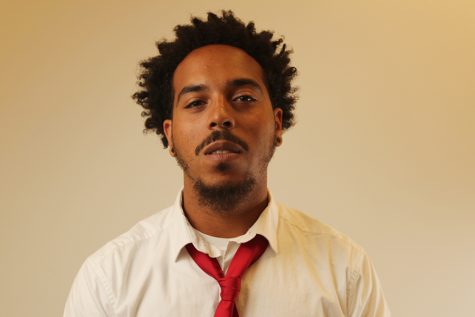Black Student Union re-emerges, aims to lead
Nov 3, 2016
The Black Student Union had been inactive on campus due to a void in filling leadership positions but is now active again as a result of young, ambitious African-American students stepping in to fulfill the vacant spots.
African-American studies and social science professor Manu Ampim is a faculty adviser for the club, along with African-American studies professor Carolyn Hodge.
Ampim said that the gaps in leadership are unfortunately the inevitable nature of community college clubs because students who hold leadership positions only do so for a year or two before transferring and leaving the role empty until another student possessing the necessary leadership qualities needed steps up and replaces them.
“It’s the nature of community colleges,” he said. “At four-year universities students hold their positions longer and have a stronger chance to develop the club and themselves into something better. At community colleges, students in leadership positions have to work harder in less time.”
“We had a strong leadership team (a few years ago), but they all transferred or transitioned out around the same time,” he said.
Hodge agreed with Ampim regarding the leadership gaps that occur in student unions at community colleges. But where they agree most is on the leadership qualities this semester’s BSU leadership team possesses. “It’s going to be exciting this semester working with this strong leadership group. I expect them to be very successful this year.”
This semester’s BSU President Eligah Morgan is one of those leaders that has sparked excitement from the club’s faculty advisers. Morgan, who is also an African-American studies and political science major, said he is prepared for the responsibilities he will face as the club’s president and is ready to implement innovative ways to reach out to the community.
“We want to start an outreach program for the local high schools,” he said. “We want to meet with BSUs of other colleges and find new ways for bringing the different student bodies across the district together.”
Morgan also said there are plans for the club to conduct rotating elementary school visits and host food drive events for the coming holiday season. Campus exposure and discovering new proactive ways to recruit students were some of the main focus points of the BSU’s latest group meeting. BSU Vice President Lavonia Bobo said students will see a more active BSU on the Contra Costa College campus this semester.
“Clubs like the BSU are great,” she said. “They bring students together that share a common bond.” Bobo, who was also the vice president of the BSU at her former high school, said,
“The student body on campus will know that we’re here because we’ll be working in the local community.” “We plan to reshape the perceptions of black people,” Bobo said.
Sociology professor Vern Cromartie talked about the history of the BSU and how important clubs such as the BSU are to students at diverse campuses such as CCC.
Dr. Cromartie said that the first ever Black Student Union was founded at San Francisco State in the 60s by Jimmy Garrett and Jerry Varnado, as a college advocacy group working toward civil rights for African-Americans.
By the following year, there was a BSU at every state college in California. Now, variations of the BSU can be found on UC, state college, community college, and high school campuses all across the country. “It’s a vital organization,” Cromartie said.
“It’s always been seen as a way to bring black students together where they can have social solidarity and social interaction around something positive.”


